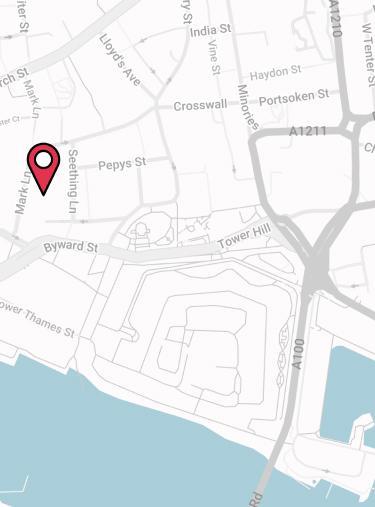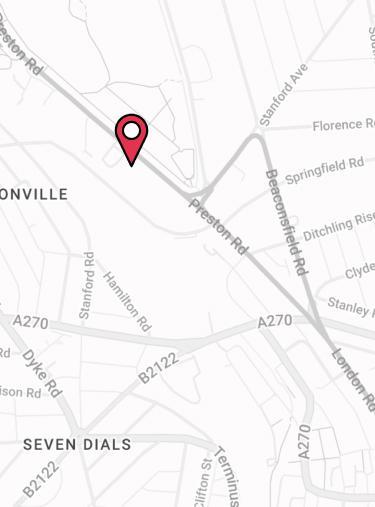
Executive Income Protection is a popular insurance policy for executives and company directors. When you run your own business or work as a key person, you might not be eligible for sick pay in the same way as a contracted employee.
If you’re looking into buying a policy to protect your income, or the income of one of your key employees, you’re in the right place. This guide has all you need to know about buying Executive Income Protection.
What Is Executive Income Protection?
Executive Income Protection provides you with a regular income if you become too ill or injured to work. It’s most popular with contractors and directors working via a limited company with little or no sick pay entitlement.
An Executive Income Protection policy:
- Covers your core outgoings (think mortgage / rent payments, household bills and groceries)
- Protects up to 80% of your drawdown in the form of salary, dividends and even pension contributions
- Can pay out from 1 week of illness or injury
- Helps to maintain your regular standard of lifestyle while recovering
- Protects your earnings right up until your expected retirement age.
GOOD TO KNOW 🤓
According to consumer group Which?, Income Protection is the one policy every working adult should consider.
Why is Executive Income Protection Important?
As a director or contractor, if you develop an illness or suffer an accident that means you need time off work, you’re likely to face financial hardship.
For most people, Statutory Sick Pay (SSP) becomes their main source of income if they take sick leave from work. However, this only pays out £118.75 per week for up to 28 weeks – which is unlikely to cover all your household bills and general living expenses.
There’s also Employment and Support Allowance, but again, the amount you’re entitled to is unlikely to be enough to cover your outgoings.

Executive Income Protection provides you with regular monthly payments to cover a percentage of your earnings. It ensures you can still pay for your home and bills and focus on what matters most – getting better.
Ben Brooks
Independent Protection Specialist
How Does Income Protection For Executives Work?
Executive Income Protection works in a similar way as a standard Income Protection policy, in that it provides a monthly income if someone is off work due to accident or sickness. However, the main difference is how the premiums are paid and taxed, as well as where the benefit is made.
The premiums for a policy are usually paid for via the limited company. This is tax efficient for business owners (more on this later). Once you’re off work longer than your chosen deferred period, the monthly payments begin. The payments will continue until you return to work, the policy ends, or you pass away.
When a claim is successful, the benefit is paid to the business. The monthly payment is then passed onto the claimant through your usual payroll method, such as PAYE.

If you need to make a claim, it’s best to inform the insurer as soon as you think you may be off work for a long period of time. This helps ensure you receive the benefit when you need it most.
Rauri Taylor
Independent Protection Specialist
Factors To Consider When Buying Executive Income Protection
There are many factors to consider when you buy Executive Income Protection. These will influence the cost of your premiums, including:
- Sum assured
You can protect up to 80% of your gross salary and dividend income, but this depends on the insurer you buy a policy from. The monthly benefit can range between 50% and 80% of your earnings - Deferred period
The deferred period refers to how long you have to be out of work sick or injured before the policy pays out. Deferred periods start at 1 day and run all the way up to 2 years. If you have enough savings to last a month, for example, you can select a deferred period of 4 weeks - Length of policy
Many insurers provide cover up to the age of 70, but this will increase the cost compared to cover that ends when you’re 60, for example. - Payout period
You can choose between Short Term or Long-Term Executive Income Protection plans. Short-term plans pay out for a maximum of 1, 2 or 5 years per condition per claim. While long-term policies continue paying out until you’re well enough to return to work or you reach your policy cease age.
SPECIALIST TIP 🧐
We tend to recommend long-term policies if your budget allows it, as it offers protection for as long as you need it, in comparison to a shorter policy.
The Premium Type
When setting up your policy, there are three types of premiums to choose from, including:
- Reviewable premiums
These are “reviewable” as the insurer sees fit. The cost can rise in certain circumstances, such as an increase in claims or due to economic factors. Your premiums are likely to be reviewed every 5 years. Reviewable premiums usually start out cheaper, but increase when reviewed. It tends to work out more expensive across the life of the policy - Age-banded premiums
These also work out cheaper to begin with, but then steadily rise each year. Unlike reviewable premiums, age-banded premiums can only rise by a preset amount stated in the policy. These increases are linked to your age and the increasing risk of you claiming as you get older - Guaranteed premiums
This type is more expensive initially. However, it cannot be adjusted during the policy unless you yourself make any changes. This generally means guaranteed premiums work out cheaper. It costs less if you buy long-term cover when you’re young and healthy, as premiums are locked in from the start and can’t change with time.
Own Occupation Cover
The definition of incapacity is what your insurer uses to define whether you are incapable of working and entitled to claim benefits. With the own occupation definition, you’ll be able to claim as long as your health prevents you from working as a director/executive.
Although most Income Protection Insurance policies will offer own occupation cover, executives must choose it as an option on your policy due to the lack of sick pay provided.

We always suggest the “own occupation” definition to ensure our clients get financial support when they need it most.
Other definitions of incapacity, such as “suited occupation’ or “any occupation”, may limit your ability to claim if you’re well enough to work in another role.
Samantha Haffenden-Angear
Independent Protection Specialist
Index Linking An Executive Income Protection Policy
With a fixed benefit at the start of your policy, the value of your benefit will decrease over time as the price of goods and services increases.
When you index link a policy, your benefit keeps up with any changes in inflation. Should inflation increase year-on-year, your premiums will increase to reflect the matching benefit.
GOOD TO KNOW 🤓
Latest stats from the ABI show insurers paid a record total of £177 million in individual Income Protection claims in 2023.
What Does Executive Income Protection Cover?
Executive Income Protection pays out a tax-free monthly benefit if you’re unable to work and earn an income due to:
- Accident or bodily injury
- Periods of sickness or illness that require sick leave.
GOOD TO KNOW 🤓
Some insurers will also cover your partner’s dividends if they hold a non-revenue generating role within your business. This is if they wouldn’t generate income for the business if you were rendered incapacitated due to accident or sickness.
Support Services and Additional Benefits
Most insurers now offer a great range of free additional benefits. These aim to support your health and wellbeing alongside your Executive Income Protection policy.
You may get access to:
- 24 / 7 Virtual GP services
- Discounted gym memberships / fitness trackers
- Physiotherapy sessions (either online or in person)
- Counselling / cognitive behavioural therapy sessions (either online or in person)
- A second medical opinion service, enabling you to get a second opinion on a diagnosis or treatment plan from a specialist health professional.
What Doesn’t Executive Income Protection Cover?
When buying cover, it’s important you understand there are some limitations and exclusions.
Pre-Existing Medical Conditions
If you’ve had a health condition in the past 5 years, it will need to be disclosed when applying for cover. It may be excluded by your insurer, which is something to consider.
Depending on the severity of your condition, the insurer will either:
- Provide cover with no change in premiums
- Provide cover with an increase in premiums to cover increased health risks
- Exclude the condition altogether from your policy.

As specialist advisers, we have direct access to the providers and underwriters on the UK market.
We’re in a position to help you get the best policy terms if you do have a pre-existing condition. If you’d like to discuss this, get in touch by calling 02084327333 or email help@drewberry.co.uk.
Danny Gill
Independent Protection Specialist
Self-Inflicted Injuries
All Executive Income Protection policies exclude injuries or illness that occur from:
- Misuse of drugs or alcohol
- Pursuit of illegal activities
- Participation in extreme sports and activities
- Travel to countries where travellers have been warned against visiting, due to active conflict, political instability and terrorism risk.
Aside from these exclusions, most Executive Income Protection policies don’t have any more restrictions. The cover you’re entitled to depends on your medical history at the time of applying for cover.
Do I Need Executive Income Protection?
When deciding on Executive Income Protection, you need to think about what would happen if you were unable to work and generate an income.
With Employment & Support Allowance providing £92.05 a week for those aged over 25, it’s clear that state benefits will not meet your weekly expenses. It’s unlikely these benefits would be satisfactory to live on if you were off work sick.
In our recent survey, we also found 1 in 5 people told us they only have enough savings for a week if they were unable to work. This is why Income Protection is a valuable policy to hold. It can help you out of financial hardship should the worst happen.
Your Risk of Incapacity
While there’s no way of predicting what might happen in the future, anyone could develop a long-term condition or suffer a serious accident that leaves them incapacitated.
- 9.07 million people (aged 16-64) were “economically inactive” between April and June 2025 – 31% of which due to long term sickness
- The average UK household spent around £625 a week at the end of March 2025.
Lack Of Savings
A worry many people have when taking time off work for medical reasons is how they’re going to cover day-to-day living expenses and regular household bills.
Some may have a substantial savings account to dip into in situations like this, but not everyone is able to save money each month. Others may not get a generous sick pay benefit from their employer. For an executive, it’s likely you’ll use Statutory Sick Pay (SSP) in the event of poor health and inability to work.
But since the average household spend a week is nearly four times the weekly SSP amount, financial hardship then becomes a much more prevalent problem.

Anyone leaving an employed role to strike out on their own should consider that they’re most likely leaving sick pay behind. Executive Income Protection can reduce this risk, so it’s worth considering as a director.
Alex Weir
Independent Protection Specialist
Income Protection Client Stories
Executive Income Protection Or Personal Cover?
Executive Income Protection is often the favoured choice for our clients. But it’s also common for directors and business owners to buy personal policies.
If you make a claim on a personal policy, your benefits are paid directly as a tax-free payment. But Executive Income Protection differs. As benefits are paid to the company, it’s down to the business owner to distribute the payments. These will be taxed as income.
What About Unemployment Insurance?
The policy terms for Unemployment Insurance make it very difficult to secure a successful claim if you run your own business or help run one.
To claim, you’ll need to:
- Prove you were made redundant through no fault of your own
- Show you had no pre-warning of the redundancy
- Be out of employment and claiming Jobseeker’s Allowance.
Even if your company is going through a bleak period, you won’t be able to claim, as you’re still employed by the limited company. We believe the risk of not being able to make a successful claim on this type of policy is too high to recommend it to clients who work for themselves.
What About Group Income Protection Insurance?
If you have more than one executive / director or you want to extend the policy to your wider team, Group Income Protection may be more suitable as it covers multiple workers under one policy.
You usually need to have a minimum of 3 employees for a group policy to be viable. So if you’re looking to insure your wider workforce, this is a good option.

My team helps businesses of all sizes set up Group Income Protection for their employees.
If you need any help, call 02084327333 or email help@drewberry.co.uk. to talk through your options.
Nadeem Farid
Head of Health & Wellbeing Benefits
How Much Does Executive Income Protection Cost?
The cost of Income Protection for executives depends on many factors – some relating to your personal situation, and others relating to the policy itself.
Here are some cost examples of how different factors can affect your premiums.
Factor 1: The Provider
The cost of premiums can differ from provider to provider. It’s always worth shopping around when looking for coverage to find the best deal for your needs.
To highlight how costs can vary from provider to provider, we’ve provided an example of how much it would cost per month, based on:
- A 40-year-old executive buying a policy
- An 8 week deferred period
- £1,800 monthly benefit
- Guaranteed premiums
- Long-term cover until age 65.
Different Providers | |
|---|---|

| 
|
£29.40 | £41.68 |
Factor 2: Your Age
Age has a significant impact on the cost of your Executive Income Protection policy. You’re more likely to develop a serious health condition or suffer an accident as you get older, so insurers increase the costs to cover this.
Using the same example as above, here are some monthly quotes for directors of varying ages wanting cover.
35 | 45 | 55 |
|---|---|---|
£22.73 | £46.47 | £97.78 |
Factor 3: Your Medical History
When you apply for Executive Income Protection, the insurer will look at your medical history if necessary. If you have a pre-existing condition in which you’ve received advice, treatment or medication for in the past 5 years, the insurer may exclude that condition from your policy.
Due to the long-term nature of a pre-existing medical condition, it would cost more for the insurer to provide cover. You may find that the insurer increases the cost of your insurance to factor in your medical history.
Factor 4: Smoker Status
It’s common for insurers to hike the price of premiums for smokers. This is because of the increased health risks associated with a nicotine habit.
Here are some quotes from Legal & General based on the policy criteria above, showing the cost differences. These quotes are how much you’d pay a month for cover.
Smoker Vs. Non Smoker | |
|---|---|
🚬 | 🚭 |
£75.39 | £50.56 |
Factor 5. Your Deferred Period
Insurers typically offer 4, 8, 13, 26 or 52 weeks deferred periods. The longer your deferred period, the cheaper the premiums, as the insurer doesn’t have to pay out immediately.
Below are some quotes for policies with different deferred periods.
Length Of Deferred Period | Cost Per Month |
|---|---|
4 weeks | £36.26 |
8 weeks | £29.40 |
13 weeks | £23.89 |
You can see how a longer deferred period reduces premiums, but opting for a 13 week wait should only be considered if you can live off savings etc. for that length of time.
If you’d like personalised quotes, you can use our Income Protection comparison tool to compare quotes from the top UK insurers.
How is Executive Income Protection Taxed?
Executive Income Protection is taxed on the claims made, as your limited company pays the premiums before tax. After a successful claim, the business will receive the benefit payments. It’s then down to you to distribute these to the employee or director via PAYE.
Since the benefit is liable for tax, you can insure a higher percentage of your earnings to counteract the fact your benefit is taxed as income.
Your premiums also qualify as a business expense as it’s paid for via the limited company. You can then enjoy a reduced corporation tax bill.

An Executive Income Protection policy is owned and paid for by your limited company. But despite the fact your company pays for the policy, it’s not usually classed as a P11D or Benefit in Kind.
Rauri Taylor
Independent Protection Specialist
UK Income Protection Provider Reviews
Executive Income Protection FAQs
How do I make an Executive Income Protection Claim?
The first thing to do if you suffer an illness or injury you think will keep you out of work is to notify your insurer immediately. It’s important to make your claim as soon as you take leave from work. This allows your insurer to organise the claim and keep track of how long it has been since you stopped working.
When you make a claim, you’ll need to provide your insurer with a completed claims form. This document can normally be found on the insurer’s website or in your welcome pack. You’ll also need to provide evidence of your health condition, usually a note from your GP.
Other forms of evidence you might need include:
- Notes from specialists / consultants
- Copies of diagnostic tests / scans.
These should all be accessible in your medical records. Your insurer may ask your GP for permission to see your record.
If your claim is successful, payments will be made to the business, which are then to be distributed. Payments are passed via PAYE, meaning the monthly income amount is taxed at the individual’s standard tax rate.
Once you’ve been out of work for longer than your deferred period, you’ll receive a monthly income until:
- You’re well enough to return to work
- You reach the end of your claims period (1, 2 or 5 years for short-term policies)
- Or the policy ends (typically at retirement, for long-term cover).
What's the difference between executive and personal Income Protection?
Executive Income Protection and Personal Income Protection are similar in many ways. Both pay out a regular monthly income if you can’t work for a medical reason.
The major difference is in how the policies are taxed and paid for. For Personal Income Protection, you pay for cover from your own bank account. When you make a claim, the benefit is paid tax free because you’ve already paid tax on the premiums.
Executive Income Protection, on the other hand, is owned and paid for by your limited company. As the business is a separate entity from you, the policy is owned by the business. When the company pays for the policy, it’s payable from pre-tax funds. Claims are then taxable because you haven’t paid tax on the premiums.
As a result, Executive Income Protection generally covers a higher proportion of your earnings. You can get up to 80% of your gross income and dividends as the level of cover is grossed up to reflect the fact the benefit will be taxed.
Is Executive Income Protection the same as Key Person Insurance?
Executive Income Protection protects a key person in the business, usually the director. As a result, some people get it confused with Key Person Insurance. But the products are different.
Executive Income Protection will compensate you as an individual if you can’t work due to injury or sickness. It allows you to meet personal liabilities, such as your mortgage / rent, bills and other expenses.
Key Person cover protects a business against the death or serious illness of a key person. If this happens, the business receives a cash lump sum (or potentially an income) to spend on mitigating the loss of this person.
Overall, Executive Income Protection protects individual directors, while Key Person Insurance covers the business.
Is Executive Income Protection a P11d benefit?
No, Executive Income Protection is not typically a P11D or Benefit in Kind. This means there’s no extra tax to pay as a result of taking out this cover. Should a claim arise, the benefit would be taxed as income.
Does Executive Income Protection include a waiver of premium?
If you’ve made a successful claim, insurers often pay your monthly premiums for you while you recover. This enables you to focus on your recovery without worrying about any extra expenses.
How does Executive Income Protection cover pension contributions?
Some providers cover pension contributions as part of your Executive Income Protection. So your policy can, in fact, protect more than 80% of your earnings. It can cover your employer pension contributions, ensuring these payments are made while you claim your benefit.
Who can take out cover?
To qualify for Executive Income Protection, a business must be registered as a limited company or a limited liability partnership. It can be purchased by a business for a director or a key employee.
Many of our clients who are directors or contractors for a limited company take out Executive Income Protection to protect their earnings.
Get Executive Income Protection Quotes and Specialist Advice
There are several pitfalls to avoid when buying Executive Income Protection, including the added complexity of tax.
Working with a specialist who can guide you through the process can give you the peace of mind that your policy is set up correctly.
If getting the cover you need seems confusing and you need some help, please do not hesitate to get in touch. Call us on 02084327333 or email help@drewberry.co.uk.
Why Speak to Us?
When it comes to protecting yourself and your finances, you deserve first-class service. Here’s why you should talk to us:
- There’s no fee for our service
- We’re an award-winning independent insurance broker, working with the leading UK insurers
- You’ll speak to a dedicated specialist from start to finish
- 4070 and growing independent client reviews rating us at 4.92 / 5
- Claims support when you need it most
- We’re authorised and regulated by the Financial Conduct Authority. Find us on the financial services register.
- Topics
- Income Protection
Contact Us
125-135 Preston Road
Brighton
BN1 6AF
Cookies
Drewberry™ uses cookies to offer you the best experience online. By continuing to use our website you agree to the use of cookies including for ad personalization.
If you would like to know more about cookies and how to manage them please view our privacy & cookie policy.


















